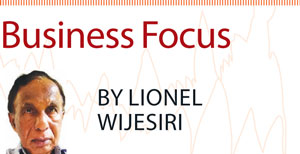14 Aug 2017 - {{hitsCtrl.values.hits}}

 When you lose a contract, tender or a big sale, you may blame the weak team members or insufficient support from the technical division or working environment. Whatever the excuse, it typically is secondary to the real issue. From my long experience working with companies and personnel, more projects or orders fail from a lack of leadership than anything else.
When you lose a contract, tender or a big sale, you may blame the weak team members or insufficient support from the technical division or working environment. Whatever the excuse, it typically is secondary to the real issue. From my long experience working with companies and personnel, more projects or orders fail from a lack of leadership than anything else.
Truth be told, an organisation will find itself hard-pressed to excel beyond the excellence or deficiency of its leadership. It is known as the ‘leadership lid’. Sometimes when things go wrong, there is a mismatch of talent. The wrong person is in charge of a specific project or venture.
Other times there is a character flaw, a blind spot with the leader but his ego, which powered him to a place of influence, can blind him to his weaknesses.
Not everyone can get things done. Not all talent is equal. A leader, though, can drive toward a goal and pull together the resources and people to make it happen.
Executive presence
And then there is what is known as ‘executive presence’. We’ve all witnessed that moment when a strong leader walks into a room and instantly commands attention. The air shifts. Heads turn. People gravitate toward them in the conversation circle. In short, these are the people that have a ‘wow’ factor or executive presence.
Executive presence is more than commanding the room, wearing the classy dress or giving a great presentation. The question is, what is it and how can you achieve it?
Let’s start with a broad definition: executive presence is the ability of the leader to engage, align, inspire and move people to act. This definition is game-changing. It explains why it matters – and why you should care. Let’s look at the qualities that science tells us define executive presence.
There are 15 qualities of executive presence. They are divided into three categories – character, substance and style. Each category has five sub-categories.
Character has authenticity, integrity, concern, restraint, humility. Substance has practical wisdom, confidence, composure, resonance, vision. Style has appearance, intentionality, interactivity, inclusiveness, assertiveness.
Character qualities build trust. Substance qualities win you credibility. Style qualities help you influence others to get things done – in short, business execution.
Develop yourself
Can you develop a stronger, more powerful executive presence? Yes, you can. First, seek to know yourself – and the way others view you as a leader.
Your executive presence is your brand, in a way – how others think about you when you’re not around. What would people say? Are you someone who is decisive when making the tough calls? That’s confidence. Are you someone who cares about others and helps them succeed? That’s concern. Are you ‘cool’ in a crisis? That’s part of composure. Do you ask questions that get to the heart of the matter? That’s one part of
practical wisdom. Start by asking others what they think of your strengths and gaps.
Here are five steps to get started:
Step 1: Identify your trusted advisors
Look for a close associate who cares about you and is willing and adept at sharing candid and constructive feedback. You may have a mentor, advisor or supervisor who plays an important role in your life.
Step 2: Ask for their feedback
Ask your trusted advisor(s) to review the 15 qualities of executive presence and weigh in on two questions: 1. What would you say are my strengths based on these definitions? 2. What are my areas of development?
Step 3: Compare these views to
your intentions
Consider the ‘face value’ of the advice you’ve been given and ask yourself, “How does this differ from what I intend to project?”
Step 4: Look for role models
Executive presence is not something you’re born with. Look around for role models, who are strong in these areas, watch what they do and adapt it to your own situation.
Step 5: Be willing to try something new
Executive presence is a complex, multi-faceted phenomenon. As you try new approaches, you will feel uncomfortable. It’s like trying on a beautiful new pair of shoes that fit but need to be broken in – well worth the investment and a little pain.
Key dimensions
The whole concept of presence may seem to be a bit fuzzy but when you think about all the characteristics of successful executives, it all starts to make sense. Presence is not a single competency but rather a combination of key competencies that, taken together, project an image of a confident, highly capable leader.
It’s important to realize that true executive presence is not about being an extrovert. Even introverts can possess executive presence. It’s not about volume; it’s about cultivating many quiet and delicate qualities that project confidence, capability and credibility.
Working closely with executives at a wide-range of different sizes and types of organisations, I have broken down executive presence into nine key dimensions:
Confidence. At the foundation of executive presence, you will find confidence. Whether it’s a conference call, sales meeting or keynote presentation, it’s important to show people that you believe in yourself and your point of view. This is established by how you look, how you sound and how you carry yourself in seminal business environments.
Communication. Successful leaders must be able to articulate a clear message so that the people they are leading have total confidence about what they need to do. Communication is not just about the verbal skills; it’s also about non-verbal signals – eye contact, body language, gestures – that other people interpret as signs of confidence and capability.
Credibility. A solid reputation is a must for someone to have executive presence. Your personal brand is the currency you use to win and keep support for all the important things you are trying to do. Credibility is also about acknowledging your weaknesses and paying attention to how other people see you. Self-awareness is a key.
Connectivity. Successful executives seem to have an innate ability to build and manage great relationships. The quality of your business relationships speaks volumes about your capacity as an executive. Those relationships are also keys to building confidence and brand awareness. Executives that are cut off from their peers have little idea of how others see them. That blind spot can undermine your presence.
Now that we know what executive presence is, we should spend some time trying to figure out how to build and improve it. It’s not an easy task, but it is within grasp of most aspiring executives.
Here are three strategies to help you develop executive presence.
Genuinely interested in others
You should have sincere and genuine interest in others. You must go out of your way to support, encourage and train those just starting out in their career. Nothing will be too much trouble in terms of helping someone else who is motivated to improve and
be successful.
Allow yourself to make mistakes and learn
You can read about mistakes, see others make them and there is nothing to beat learning first-hand what happens and how it feels when things don’t quite go to plan. Good leaders understand that making mistakes is just part and parcel of their growth
and development.
Delegate to develop
It can be really tempting to hold on to all the best stuff or that you like doing. Good leaders understand the opportunity that delegation brings for them in terms of focus and for others to acquire new skills, experience
and knowledge.
Develop a sense of humour
Everyone is under a lot of pressure these days to hit deadlines, targets, milestones and to improve. Often a bit of light hearted fun and humour can go a long way to reducing pressure during busy and demanding times.
Acknowledge regularly
We might not do it consciously but often it is easy to forget just how much effort people are actually making to deliver results. A simple well done, good effort or thank you can go a long way towards keeping people motivated and engaged.
The bottom line: There is nothing magical about standing out as a leader. Sometimes it is just the really simple things that make a
huge difference.
(Lionel Wijesiri is a retired corporate director counting three decades of senior management experience. He is now an independent consultant and a freelance journalist. He may be contacted on [email protected])
06 Jan 2025 1 hours ago
06 Jan 2025 2 hours ago
06 Jan 2025 2 hours ago
06 Jan 2025 2 hours ago
06 Jan 2025 2 hours ago